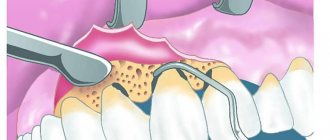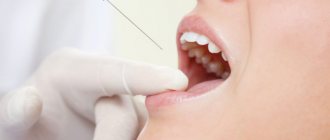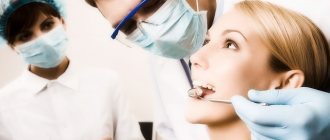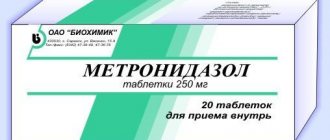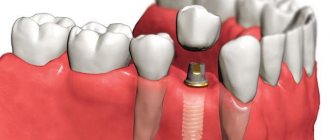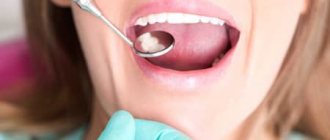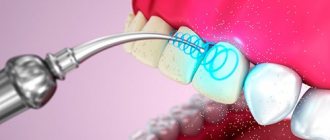Indications for use
The degree of need to take antibiotics is determined depending on the nature of the disease and the body’s response to this process.
As a rule, antibiotics for toothache are prescribed in the case of periodontitis or osteomyelitis.
If the patient finds himself in the dentist's chair at the stage of exacerbation of the disease, especially in the presence of purulent inflammation, antibiotics are indicated after treatment. The urgent need to prescribe drugs arises after surgical treatment of periodontitis, meaning resection.
In addition, this group of medications should be taken for gum disease (advanced cases of periodontitis, periodontal disease, necrotizing ulcerative gingivitis). Any type of dental removal, especially purulent formations, opening of abscesses, phlegmons are also accompanied by the use of drugs of this class.
Treatment with mumiyo
Shilajit is an effective folk remedy for many diseases, including dental ones. In particular, mumiyo is also used in the treatment of:
- stomatitis;
- gingivitis;
- periodontitis.
For periodontal disease, mumiyo is used quite often. It is recommended to rinse your mouth with mumiyo solution. Preparing a rinse solution is quite simple; you need to dissolve 2 g of mumiyo in 100 g of boiled water. You should rinse your mouth with this solution twice a day, morning and evening. To enhance the effectiveness of treatment, you should also take 1 teaspoon of solution orally.
You can also make gum applications using mumiyo solution. To do this, 5 g of mumiyo must be diluted in 100 ml of water, and a cotton swab soaked in the solution must be systematically applied to the inflamed gum.
Prescription for preventive purposes
In some cases, the patient is indicated for prophylactic use of such drugs. Then antibiotics for dental treatment should be taken 1-3 days before the upcoming procedure.
Most often, such measures are necessary in case of a high risk of septic endocarditis. The group of such patients includes carriers of installed pacemakers, patients with artificial valves and those who suffer from heart failure, polyarthritis, endocarditis, etc. Patients with joint prostheses also join the above.
Prescribing antibiotics in these cases is essential due to the risk of tissue infection. This is especially true when performing dental procedures accompanied by bleeding.
Even banal removal of tartar can lead to similar consequences. The result will be the entry of pathogenic microorganisms into the blood and the further development of an inflammatory disease.
The group of special patients in need of antibiotic therapy includes those suffering from chronic infections in the oral cavity and patients with weakened immune systems. The target group is also supplemented by patients with diabetes mellitus, rheumatoid arthritis, etc.
The selection of drugs in case of need for preventive antibiotic therapy is also carried out on an individual basis.
Antimicrobial ointment for periodontal disease
Quite often, ointments are used to treat periodontal disease, normalizing vascular blood flow and having an epithelializing and anti-inflammatory effect.
The most popular treatment for periodontal disease is heparin ointment. Its main component, heparin, is an anticoagulant that affects the exudative inflammatory phases. Due to this, the ointment has a very good anti-inflammatory effect and improves the condition of the gums. Also, homeopathic ointment “Traumel S”, which has an anti-inflammatory effect, is often used for periodontal disease. The mineral and plant components in its composition reduce inflammation, tighten the walls of blood vessels, improve microcirculation and activate both general and local immunity. Since the remedy is homeopathic, it does not have a pronounced therapeutic effect, but is able to maintain gum tissue in a more or less healthy state, preventing further development of inflammatory processes.
Medicinal methods for solving dental problems are supplemented with medications for external use. These are special ointments and gels with anti-inflammatory and antiseptic effects that provide accelerated regeneration of damaged tissues. The following medicinal ointments are especially effective in a given direction at affordable prices:
- Elugel;
- Elgifluor;
- Metrogil Denta;
- Troxevasin;
- heparin ointment.
Quite often, ointments are used to treat periodontal disease, normalizing vascular blood flow and having an epithelializing and anti-inflammatory effect. The most popular treatment for periodontal disease is heparin ointment. Its main component, heparin, is an anticoagulant that affects the exudative inflammatory phases. Due to this, the ointment has a very good anti-inflammatory effect and improves the condition of the gums.
Types of drugs used in dentistry
Research shows that dental diseases often develop due to mixed bacterial microflora in the oral cavity. That is why the recommended antibiotics in dentistry include broad-spectrum drugs.
Medicines taken orally include:
The following drugs are prescribed in the form of injections in dentistry:
- Lincomycin;
- Clindamycin;
- Oxacillin.
Formulations that can be used topically by patients (in the form of gels):
Antibiotics that dentists “like” to prescribe
Among the most commonly prescribed antibiotics by dentists are the following.
Ciprofloxacin
Antibacterial spectrum drug. The medicine in the context of the dental area is indicated for postoperative infectious complications - developing purulent-inflammatory processes and dental inflammation (complicated pulpitis).
The drug is taken for dental infections in the form of tablets of 0.5 and 0.25 g. The dosage of the drug is determined by a specialist individually in each specific case.
The medicine usually does not cause side effects. In some cases, allergic reactions may occur in the form of a rash and itchy skin. Swelling of the face and vocal cords is possible. The list of undesirable consequences of taking the drug may include:
- nausea;
- vomit;
- lack of appetite;
- diarrhea;
- abdominal pain;
- insomnia;
- headache;
- feeling of malaise and anxiety.
Directions for use for gum inflammation
Do not rinse your mouth with Metronidazole in the form of an intravenous solution. Improper use of the medicine causes poisoning. Infectious and inflammatory gum diseases should be treated with oral tablets 250 mg or 500 mg, cream, gel. IVs are placed in hospitals. After using medications for external use, do not consume anything and do not rinse your mouth for at least 30 minutes.
Local treatment of gum inflammation with Metronidazole is carried out in two ways:
- Apply the gel to the inflamed area twice a day. The product is applied in a thin layer to the roots of the teeth. While it is distributed over the mucous membrane, the gums are massaged with a finger. Saliva must be spat out;
- They make applications. Grind one 500 mg tablet, dissolve the powder in Chlorhexidine (antiseptic solution). A gauze swab is moistened in the liquid and placed between the inflamed gum and lip, cheek.
Together with Amoxicillin or another antibiotic for gingivitis, Metronidazole is prescribed orally for people over 18 years of age. In monotherapy for gum inflammation, the dose for adults is calculated according to the scheme 7.5 mg/kg (but not more than 4 g per day), and for children – 5 mg/kg. The medicine must be taken three times a day. For children, an individual daily dosage is calculated.
Efficacy of antimicrobial agents
The effectiveness of antibiotic therapy in dentistry is difficult to dispute. Drugs in this group are able to “insure” the patient against the development of various complications during the treatment process. In addition, the current trend towards a decrease in the population's immunity significantly increases the risk of all kinds of related ailments.
Dentists are only concerned about the fact that the number of pathogens that have acquired or already become resistant to antibiotics is constantly increasing.
Thus, most microbes no longer respond to first-generation drugs (Penicillin, Tetracycline, etc.).
For this reason, dentistry is forced to almost completely switch to 2nd and 3rd generation drugs - drugs from the group of lincosamides and macrolides, the effectiveness of which in some cases is also called into question, in particular in case of violation of the rules of therapy.
Thus, the combination of antibiotic therapy with the main methods of treating dental ailments is indeed effective, provided that a competent approach is taken by a specialist, as well as the painstaking work of a research group in the dental industry.
The use of trichopolum in the treatment of gums
Many antibiotics, successfully used in the treatment of a number of serious diseases, are powerless against simple microorganisms. To combat protozoal diseases, special drugs are required that act specifically on this group of microorganisms. These drugs include metronidazole. This synthetic antibiotic is a chemical modification of azomycin, produced by bacteria of the genus Streptomycetes. This medicine is widely known under the trade name "Trichopol", which is patented by the Polish.
This drug was originally developed as a cure for trichomoniasis, but it was accidentally discovered that it can also act on bacteria. And that in the treatment of inflammatory processes of the gums, complications after tooth extraction and other problems of the oral cavity, Trichopolum can also be used.
Rinse
A simple and at the same time very effective method of treating periodontal disease is rinsing with special means. It is best to use warm decoctions of lingonberry leaves, violet or calendula flowers, burdock and oak bark for this - such rinses reduce pain and relieve inflammation. If your gums are bleeding, then it will be useful to rinse your mouth with hot infusions of blackberry leaves, St. John's wort, burnet, sandy sedge and blood-red geranium.
Removing a wisdom tooth, like any surgical intervention, can cause a lot of trouble for a person. Despite modern methods of pain relief used during dental operations, in the postoperative period the patient almost always experiences severe pain. In addition, complications in the form of inflammatory processes and wound infection are possible. To prevent such conditions, dentists recommend rinsing the mouth with various antiseptic agents.
Rinsing after wisdom tooth removal is one of the most effective ways to relieve pain and inflammation. Common rinses are:
- Miramistin. Solution with antiseptic effect. It is recommended to use 2-3 times a day, holding the solution in the mouth while rinsing for 1-3 minutes.
- Chlorhexidine. An effective antiseptic that is used prophylactically to avoid infection of the socket in the postoperative period. You can buy a ready-made solution in pharmacies. You should rinse your mouth several times a day.
- Infusions of medicinal herbs: calendula, chamomile, eucalyptus, sage, St. John's wort, etc. They have a less pronounced antiseptic effect than antiseptic solutions. To prepare the infusion 1 tbsp. A spoonful of herbs must be poured with 200 ml of boiling water and left to infuse to room temperature.
- Soda-salt baths. They are used in cases where an inflammatory process occurs in the gums and a drainage system was used to drain pus. You should rinse your mouth with a strong solution of salt and soda 2-3 times a day.
- Furacilin solution. It has a pronounced antimicrobial effect and is effective against various types of pathogens. Available in ready-made form (solution in bottles) and tablets (to prepare the solution, you need to dissolve 2 furatsilin tablets in a glass of water). It is recommended to rinse your mouth 3-4 times a day between meals and before bed.
You should rinse your mouth after removing the “eight” no earlier than on the second day after surgery. This must be done very carefully so as not to damage the blood clot protecting the socket of the extracted tooth. The rinse liquid should be warm (25-35 ° C).
Indications for use of trichopolum
Serious diseases can be caused not only by viruses and bacteria, but also by protozoa. Among the diseases caused by the latter is one of the most dangerous diseases - malaria, which claims hundreds of thousands of lives per year. Protozoan microorganisms also cause dangerous diseases such as:
- amoebiasis;
- leishmaniasis;
- trypanosomiasis;
- giardiasis;
- balantidiasis and others.
Among the diseases caused by protozoa is such a very common phenomenon as trichomoniasis, which is the most common among both diseases of the genitourinary organs and among infections and infestations transmitted through sexual contact.
Initially, Trichopolum was used for trichomoniasis. Subsequently, the range of its applications significantly
expanded. This drug can act on the following protozoan microorganisms:
- Trichomonas, causing trichomoniasis.
- Amoebas are the causative agents of amebic dysentery.
- Isospora.
- Giardia.
In addition, this antibiotic also acts on a number of bacteria, such as:
- Gardnerella, which causes gardnerellosis.
- Bacteroides, which are causative agents of various diseases, from chronic runny nose to necrotizing pneumonia.
- Fusobacteria, which can cause purulent and gangrenous processes in people with weakened immune systems.
- Veillonella, the accumulation of which on teeth leads to periodontitis.
- Prevotella, which causes inflammation of the gums.
- Clostridia are the causative agents of tetanus and gas gangrene.
- Peptococci, involved in the development of inflammatory processes in the oral cavity, in particular, those that arise as complications after tooth extraction.
Thus, Trichopolum can be used for trichomoniasis, gardnerellosis and other diseases caused by the above microorganisms. In addition, metronidazole destroys Helicobacter pylory, and therefore Trichopolum can also be prescribed when the stomach hurts due to gastritis or peptic ulcer. However, if your stomach hurts, treatment with metronidazole is advisable only if the disease is caused by these bacteria.
Metronidazole is used both for independent diseases and for various secondary pathologies, for example, in dentistry, when it is necessary to treat complications after tooth extraction.
Metronidazole affects not only
unicellular microorganisms, but also against multicellular parasites such as demodex mites. Therefore, Trichopolum is also used for demodicosis. Numerous reviews indicate that such treatment gives positive results.
Trichopolum can be taken orally in tablet form. Injections of the drug are also prescribed. For trichomoniasis and gardnerellosis, the medicine can be used in the form of vaginal suppositories. The question of how to take Trichopolum for trichomoniasis, in the form of tablets or in the form of suppositories, is decided by the attending physician in relation to each specific case.
Healing after wisdom tooth removal
Removing a wisdom tooth is a labor-intensive dental operation, so it should be taken seriously, strictly following all the doctor’s recommendations.
Healing after wisdom tooth removal does not always go smoothly. For the normal course of this process, it is necessary to monitor the restoration of damaged tissues and the condition of the socket of the extracted tooth. First of all, you need to make sure that the blood clot, which forms in the socket and performs protective functions, is not damaged.
After the removal of the third molar, the patient is not recommended to brush his teeth for several days, so as not to injure the painful area with a toothbrush. For normal wound healing, you should refrain from eating for the first 3 hours after surgery, and also stop smoking until the wound heals.
It is better to exclude hot foods from your diet and also stop drinking alcohol. In order for healing to be successful, in the first days after surgery to remove a wisdom tooth, the patient must take care of proper rest. During this period, excessive physical activity, as well as prolonged exposure to the sun, hot baths, saunas, etc. are contraindicated.
If during the wound healing process symptoms such as swelling of the cheek, swelling of the gums, fever and severe, increasing pain are observed, the patient should urgently consult his doctor. Perhaps an inflammatory process has begun that requires urgent intervention and medical care.
After the removal of the third molar, the patient is not recommended to brush his teeth for several days, so as not to injure the painful area with a toothbrush. For normal wound healing, you should refrain from eating for the first 3 hours after surgery, and also stop smoking until the wound heals.
It is better to exclude hot foods from your diet and also stop drinking alcohol. In order for healing to be successful, in the first days after surgery to remove a wisdom tooth, the patient must take care of proper rest. During this period, excessive physical activity, as well as prolonged exposure to the sun, hot baths, saunas, etc. are contraindicated.
How is Trichopolum used for toothache?
Metronidazole, initially used as a treatment for trichomoniasis, accidentally found use in dentistry when a patient treated for trichomoniasis had inflammation of the gums. Nowadays this drug is widely used to treat inflammatory processes in the oral cavity. In dentistry, in the treatment of diseases of the gums and teeth, this antibiotic can be used in the form of tablets. In addition, there are ointments for gums containing the drug.
In dentistry, trichopolum is used to relieve local inflammation during gingivitis. Signs of this disease include pain,
redness and bleeding of the gums, bad breath. However, in this case, you cannot self-medicate, since this disease often, in addition to drug treatment, also requires surgical procedures - cleaning the gums from ulcers, removing its overgrown parts and dental plaque. Such measures become necessary in the later stages of the disease, the onset of which is indicated by the appearance of an odor.
For periodontitis, the main treatment is surgical and consists of removing tartar and gum pockets. Against the background of these procedures, metronidazole may be prescribed as an anti-inflammatory agent.
The use of trichopolum after tooth extraction
After tooth extraction, Trichopolum is used primarily in case of complications. Sometimes after this operation inflammatory processes occur. This usually occurs either after an unsuccessful tooth extraction, as a result of which the wall of the socket is damaged, or when the patient’s immunity is weakened, when the wound left after the operation does not heal and hurts for a long time.
Often the cause of complications after tooth extraction is the patient’s neglect of the doctor’s instructions regarding personal postoperative procedures, such as rinsing the mouth. If, after tooth extraction, inflammatory processes in the oral cavity begin, the doctor may prescribe treatment with antibiotics, including Trichopolum.
How is Trichopolum used for bad breath?
The appearance of bad breath is a common phenomenon and can be caused by various reasons, from poor personal hygiene to various diseases of the digestive system, in particular gastritis. If the cause of bad breath is gingivitis or periodontitis, then to remove it, treatment of the corresponding disease is required, for which trichopolum can be prescribed.
If the cause of bad breath is gastritis, then treatment of this disease is necessary, which can be done with the use of metronidazole.
If you experience bad breath, you should consult a doctor to determine the cause. The doctor will determine the exact cause of this odor and prescribe appropriate treatment. Using metronidazole or other antibiotics on your own to remove bad breath, relieve inflammation after tooth extraction, or for any other purpose means exposing yourself to considerable risk. After all, the cause of the smell can be not only bacterial infections, but also problems with the endocrine system or hormonal disorders. In such cases, the use of antibiotics can only cause harm.
When are antibiotics needed for periodontal disease?
If the disease progresses rapidly, gum inflammation leads to partial or complete loss of teeth. To prevent this from happening, together with the dentist it is necessary to determine the etiology of the pathological process and study the extent of bone damage using an x-ray. If the clinical picture is advanced, the specialist recommends treatment of periodontal disease with antibiotics, an integrated approach to the emerging health problem. Additional indications for antibiotic therapy are as follows:
- dental mobility;
- increased symptoms of periodontal disease;
- obvious inflammatory processes in the gums.
Antibiotics for moderate gum inflammation
To treat periodontal disease with antibiotics, doctors recommend fourth-generation antibacterial agents with a systemic effect on a weakened organism. On the one hand, this is a positive point, since a mild and safe effect is concentrated on the source of pathology, on the other hand, side effects can spread to internal organs and systems.
Antibiotics for periodontal disease should be prescribed by a dentist, and the individual daily dosage must be clearly specified. The following medications in combination with Chlorhexidine have proven themselves well in this direction:

